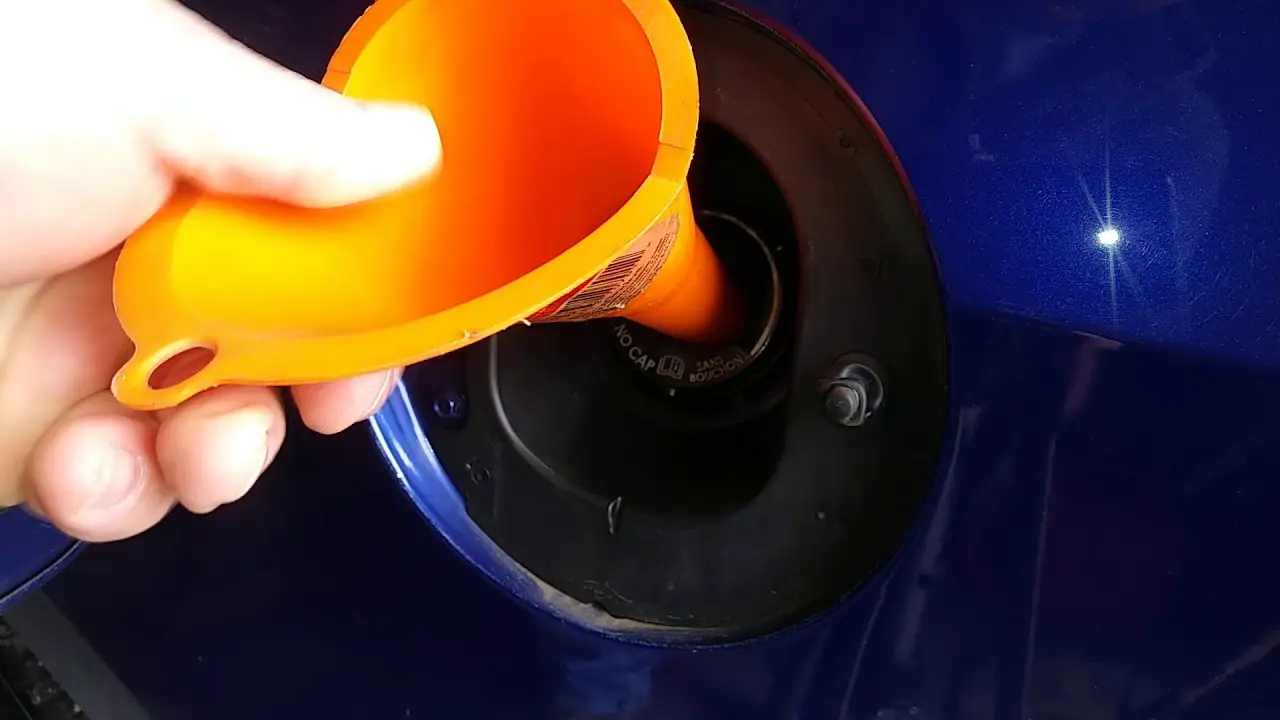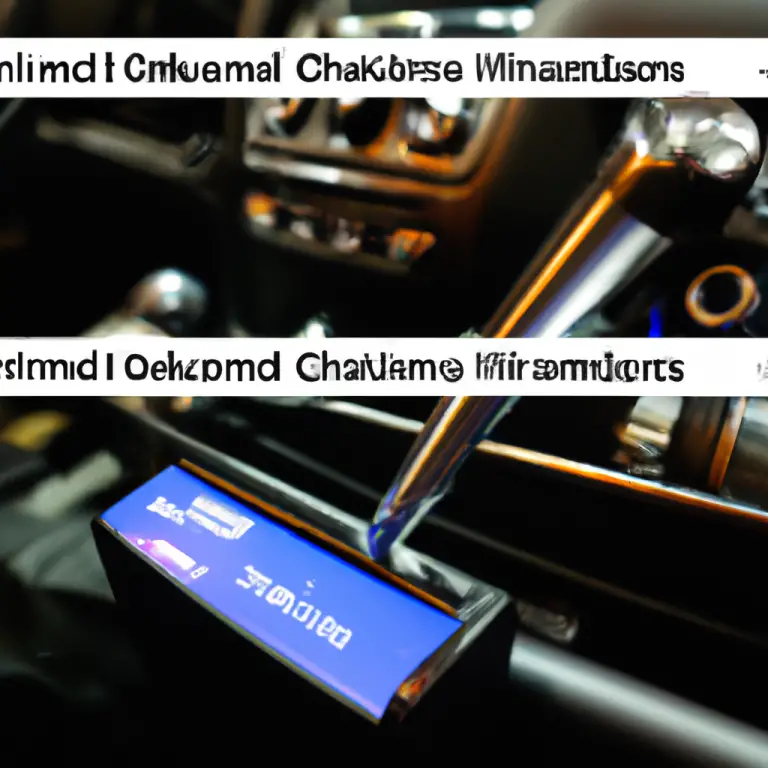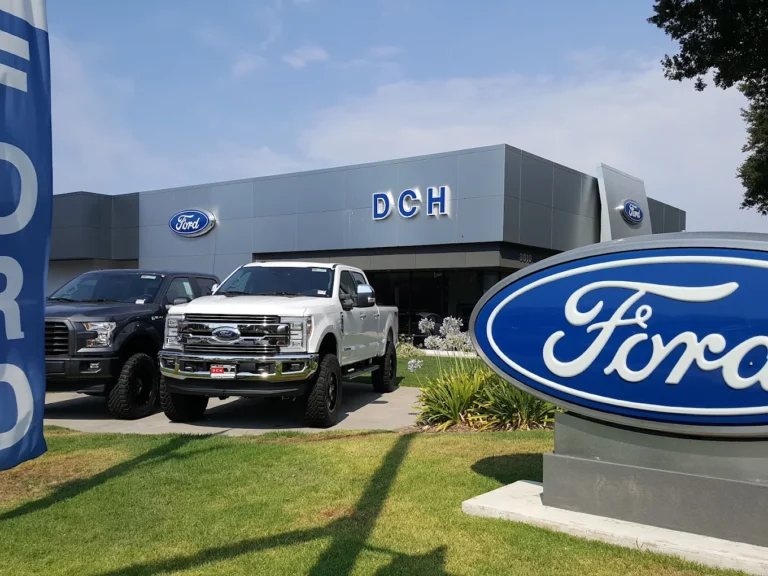How to Open Ford Easy Fuel Without a Funnel: A Complete Step-by-Step Guide
It is a frustratingly common scenario for Ford owners: you are miles from home, your fuel light is on, and you have a gas can ready, only to be stopped by the vehicle’s capless fuel filler. Without the special funnel, the Ford Easy Fuel system will not accept fuel from a portable container, leaving you stranded. This guide provides a definitive solution to this problem.
To open a Ford Easy Fuel system without the funnel, you can carefully use two flathead screwdrivers to simultaneously press the release tabs on either side of the inlet flap. However, the safest and manufacturer-recommended method is to locate the OEM funnel stored with your vehicle’s tire-changing kit or purchase an inexpensive replacement.
This article offers a comprehensive look at the Ford Easy Fuel system, providing step-by-step instructions for emergency refueling without the factory funnel, troubleshooting common related issues, and detailing replacement options to ensure you are never stuck again.
How Does Ford’s Capless Fuel System Work?
Understanding the mechanics of the Easy Fuel system is crucial for appreciating why it requires a specific tool for manual refueling and the risks involved in bypassing it. The system is more than a convenience; it is an engineered solution designed to solve a persistent issue with traditional fuel caps.
The Ingenious Flap and Latch Mechanism
The core of the Ford Easy Fuel system is a capless fuel filler featuring an integrated, spring-loaded flapper door. This door is held securely shut by two internal latches. This design creates a permanent, automatic seal every time the fueling nozzle is removed, which is a significant departure from traditional screw-on caps that drivers could forget, lose, or fail to tighten properly.
In some versions of the system, there are actually two sealing doors. An upper door serves as a barrier to prevent water, dust, and debris from reaching the primary lower sealing door, which maintains the pressure seal for the fuel system. This robust design ensures the integrity of the fuel tank environment.
The development of this system was a direct response to a common driver error. With traditional gas caps, failing to tighten the cap properly would break the seal of the vehicle’s pressurized Evaporative Emission Control (EVAP) system. The onboard computer would detect this as a vapor leak, triggering a “Check Engine” light and leading to unnecessary service appointments. The Easy Fuel system’s automatic seal effectively eliminates this problem.
The Misfueling Inhibitor: A Built-in Safeguard
A key feature of the Easy Fuel system is its misfueling inhibitor, a patented detector that guides the fuel nozzle to the opening and verifies its size. The internal latches that release the flapper door are calibrated to be depressed only by a standard-size fuel nozzle.
This mechanism serves two critical functions:
- Prevents Misfueling: Diesel fuel nozzles are larger in diameter than gasoline nozzles. The inhibitor in a gasoline-powered Ford will not release its latches for a diesel nozzle, and conversely, the smaller gasoline nozzle will not activate the mechanism on a diesel-equipped Ford. This prevents catastrophic engine damage from using the wrong fuel type.
- Deters Siphoning: The system will not open for foreign objects like a simple plastic hose, making it significantly more difficult for thieves to siphon fuel from the tank.
The system is designed to accommodate standard non-commercial fuel pump nozzles up to 1 inch (25 mm) in diameter.
Why the Special Funnel is Necessary for Gas Cans and Additives
The nozzles on portable gas cans and the necks of fuel additive bottles are not standardized and are almost always smaller in diameter than a fuel pump nozzle. As a result, they cannot properly engage the misfueling inhibitor’s latches to open the inner flap.
The white plastic funnel provided by Ford is engineered to the exact diameter of a standard unleaded fuel nozzle. When inserted, it performs the same function as a pump nozzle, depressing the latches correctly and allowing the flap to open so that fuel can be added from an emergency gas can or additives can be poured into the tank.
Where is the Ford Easy Fuel Funnel Located?
Before attempting any emergency measures, the best course of action is to conduct a thorough search for the original funnel. Many owners are unaware the funnel exists or do not know where it is stored. Its location can vary significantly depending on the vehicle’s model, year, and even how it was prepared by the dealership.
Here are the most common locations to find the Ford Easy Fuel funnel:
- With the Spare Tire Kit: This is the most frequent storage spot. Lift the floor panel in the trunk or cargo area and look for the funnel clipped to or stored alongside the jack, lug wrench, and other tire-changing tools.
- Behind a Rear Seat: In many Ford trucks, including the F-150, the funnel and jack kit are located behind the rear passenger-side seat. This often requires pulling a latch on the side of the seatback to fold it forward.
- In a Trunk or Cargo Area Cubby: Some models, like the Ford Fusion, may have a small, covered compartment on the side of the trunk where the funnel is stored.
- In the Glove Box or Accessories Bag: During pre-delivery inspection (PDI), some dealership technicians may move the funnel to the glove box or place it in a plastic bag with the owner’s manual and other accessories for easier access.
If you have checked these locations and cannot find the funnel, it may have been lost by a previous owner. In that case, you can proceed to the emergency methods below or, for a safer long-term solution, purchase a replacement.
Emergency Refueling: Two Methods for When You Don’t Have the Funnel
If you have confirmed the funnel is missing and you are in an emergency situation, it is possible to manually open the Easy Fuel system.
WARNING: These methods are for emergency use only. They carry a significant risk of damaging the rubber seal or plastic components of the fuel filler neck. A damaged seal can cause an EVAP system leak, leading to a persistent “Check Fuel Fill Inlet” warning light and potentially costly repairs. Proceed with extreme caution.
Method 1: The Two-Screwdriver Technique
This method uses two small screwdrivers to mimic the action of the OEM funnel by manually depressing the system’s release latches.
Tools Needed:
- Two small or medium flathead screwdrivers
Step-by-Step Instructions:
- Open the exterior fuel door to expose the capless inlet.
- Look inside the metal inlet and identify the two small, spring-loaded release tabs. They are typically located on opposite sides of the opening, at the 3 o’clock and 9 o’clock positions.
- Carefully insert the tips of both screwdrivers into the inlet, one on each tab.
- Simultaneously and gently, press both tabs outward (away from the center of the opening). You may feel a slight click as the inner metal flap is released.
- While keeping the tabs depressed, use one of the screwdrivers to push the now-unlocked inner flap inward, opening the path to the fuel tank.
- Crucially, be careful not to drop a screwdriver into the fuel tank.
- Once the flap is held open, you can insert the nozzle of your gas can or a standard aftermarket funnel to add fuel or additives.
Method 2: Creating a DIY Funnel with a PVC Pipe
A small piece of PVC pipe with the correct diameter can serve as a makeshift tool to activate the release mechanism, similar to the OEM funnel.
Tools Needed:
- A short, clean piece of 1/2-inch ID (Inner Diameter) PVC pipe.
Step-by-Step Instructions:
- Ensure the PVC pipe is completely clean and free of any dirt, dust, or plastic shavings that could contaminate the fuel system.
- Insert one end of the 1/2-inch ID PVC pipe into the Easy Fuel inlet. This diameter is an exact fit to correctly depress the release tabs without causing damage.
- Gently push the pipe inward until you feel the inner flap open. Do not use excessive force.
- With the pipe holding the flap open, you can place a larger, standard funnel into the top opening of the PVC pipe to pour fuel.
Safety Note: Standard PVC plastic is not rated for long-term contact with gasoline and can degrade over time. This method should only be used in an emergency. Dispose of the pipe properly after use and purchase an OEM-spec funnel for future needs.
What to Do When You Have Other Fueling Issues
Problems with the Easy Fuel system are not limited to a missing funnel. You may also encounter a stuck fuel door or a persistent warning light on your dashboard.
My Ford Fuel Door Won’t Open: Finding the Emergency Release
If the exterior fuel door itself is stuck and will not open, the issue could be a broken interior release button, a damaged hinge, or an obstruction like ice. On some Ford F-150 models, a small plastic pin in the door’s release mechanism is a known weak point that can break.
Fortunately, most Ford vehicles are equipped with a manual emergency fuel door release. To access it, open the trunk or rear hatch and locate a removable panel or cover on the interior trim, on the same side as the fuel door. Behind this panel, you will find a pull cord or lever. Pulling this lever will manually disengage the lock, allowing you to open the fuel door.
Decoding the “Check Fuel Fill Inlet” Warning Light
This warning message is one of the most common issues related to the Easy Fuel system. It indicates that the EVAP system has detected a leak at the filler neck, meaning the system is not properly sealed.
Common Causes:
- Debris on the Seal: The most frequent cause is small particles of dirt, dust, or debris accumulating on the rubber seal of the inlet, preventing the flap from closing completely.
- Damaged Seal: The seal itself may be worn, cracked, or damaged from age or from using improper objects to open the inlet.
- Stuck Flap: The inner flap may be physically stuck in a partially open position due to debris or a mechanical fault.
- Faulty EVAP Purge Valve: Sometimes the issue is not with the inlet itself but with another component in the EVAP system, like the canister purge valve, which can trigger the same warning.
How to Fix and Reset the Light:
- Clean the Inlet: The first step is always to clean the fuel inlet. Open the fuel door and use a clean, lint-free cloth to wipe the rubber seal and the metal area where the flap seats.
- Cycle the Flap: Insert the OEM funnel (or a fuel pump nozzle) several times to help dislodge any hidden debris and ensure the flap is seating correctly.
- Complete a Drive Cycle: The warning light will not turn off immediately. The vehicle’s computer must run its internal EVAP system test, which typically requires a specific drive cycle (a mix of city and highway driving). After a few cycles, if the seal is good, the light should turn off on its own.
- Check for Codes: If cleaning does not resolve the issue, use an OBD2 scanner to check for diagnostic trouble codes. Codes like P0455 (Gross Leak) or P0456 (Small Leak) confirm an EVAP system fault that may require professional diagnosis.
The Easy Fuel Flap is Stuck Open or Closed
If the inner flap will not open when a proper nozzle is inserted, or if it remains open after refueling, the cause is likely debris, a bent latch, or a failed spring mechanism. Another potential cause is a clogged fuel tank vent line, which can create a pressure vacuum that makes it difficult for the flap to operate and often leads to the fuel pump nozzle shutting off prematurely during refueling.
Carefully inspect the inlet for any visible obstructions. If the mechanism is physically broken, the entire fuel filler neck assembly will likely need to be replaced.
Getting a Replacement Funnel and Understanding Repair Costs
Given the risks and potential for expensive repairs associated with DIY methods, the most prudent course of action for a lost funnel is to purchase a replacement.
Finding the Right Replacement Funnel
OEM or high-quality aftermarket funnels are inexpensive and widely available from Ford dealerships, auto parts stores, and online retailers. Using the correct part ensures it will operate the Easy Fuel system as intended without causing damage.
| Part Number | Alternate / Interchange Part Numbers | Commonly Fits | Example Purchase Link |
| 8U5Z-17B068-B | 8U5A-17B068-AD, 8U5Z17B068B | Ford Focus, Edge, Fusion, Explorer, F-150, Escape, Mustang; Lincoln MKC, MKT, MKX, MKZ | [Check Price on Amazon] |
| 8U5Z-17B068-K | 8U5Z17B068D | 2008-2020 Ford and Lincoln Models | |
| 1782177 | 1833948, 2050651, 8U5A-17B068-EB | Ford C-Max, Fiesta, Focus, Flex |
Note: For the most accurate results, always confirm part compatibility by using your vehicle’s VIN when ordering.
How Much Does It Cost to Replace a Ford Fuel Filler Neck?
Damaging the capless mechanism is a costly mistake. The contrast between the price of a replacement funnel and a full filler neck repair underscores the importance of avoiding risky emergency methods. A replacement OEM funnel costs around $11-12.
If the entire assembly needs to be replaced, the part itself can cost anywhere from $60 to over $200. However, the labor is often the most expensive component. Depending on the vehicle model, replacing the filler neck can be a complex job requiring the removal of the rear wheel and inner fender liner, and careful disconnection of sensitive fuel and EVAP lines. Labor costs can range from $200 to over $1,200 for more complicated models, bringing the total repair cost to a significant sum.
Ford Easy Fuel System: Your Questions Answered
Can I use a regular funnel for my Ford Easy Fuel tank?
No, a regular aftermarket funnel from an auto parts store will not work. Its nozzle is too small in diameter and will not be able to activate the internal safety latches of the misfueling inhibitor. Using force can damage the system. You must use the specially designed Ford funnel or a compatible aftermarket replacement.
What happens if I damage the Easy Fuel system?
Damaging the internal rubber seal or the latch mechanism can prevent the system from sealing properly. This will cause a vacuum leak in the EVAP system, which will trigger the “Check Fuel Fill Inlet” warning light on your dashboard. This can also cause your vehicle to fail an emissions test. In severe cases, the entire fuel filler neck may need to be replaced at a significant cost.
How do I prevent the “Check Fuel Fill Inlet” message from coming back?
The best way to prevent this message is through regular, simple maintenance. Periodically wipe the inside of the fuel inlet and the rubber seal with a clean cloth to remove any dust or debris. When refueling, ensure the pump nozzle is fully inserted. Finally, avoid the common practice of “topping off” the tank after the pump automatically shuts off; this can force liquid fuel into the charcoal canister and damage the EVAP system.
Is it safe to regularly open the Easy Fuel system without the funnel?
No. The DIY methods described in this article, such as using screwdrivers or a PVC pipe, are intended for one-time emergency situations only. Repeatedly forcing the mechanism open with these tools will inevitably lead to wear and tear on the seal and latches, eventually causing an EVAP leak and requiring repairs.
Conclusion
The Ford Easy Fuel system is an innovative feature that enhances both convenience and environmental safety by eliminating the traditional gas cap. However, this design creates a unique challenge when the specialized funnel required for emergency refueling is lost or misplaced.
While it is possible to manually open the system using tools like screwdrivers in a true emergency, these methods carry a high risk of causing damage that can lead to expensive repairs. The most reliable and cost-effective solution is to first conduct a thorough search for the original funnel in its common storage locations. If it is truly lost, purchasing a replacement for around $12 is a minor investment that protects the integrity of your vehicle’s complex fuel system and prevents a potential repair bill that could exceed $1,000.
For vehicle-specific part numbers or to check for any recalls related to your fuel system, we recommend running a [Free VIN Check] to get the most accurate information for your Ford.




